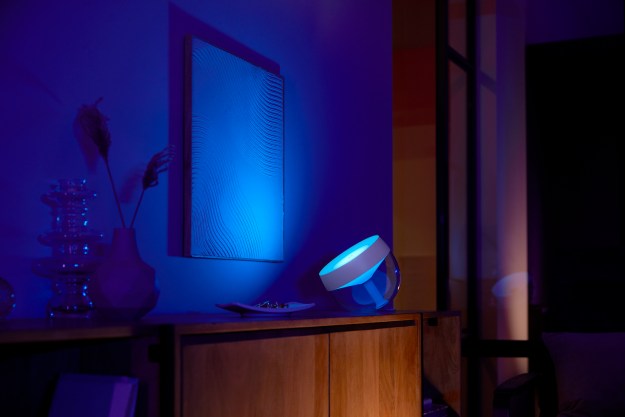If you’ve never gotten around to repainting the living room, even though that task has been on your to-do list for years, you may want to try a different approach that doesn’t require any paintbrushes or color swatches. Signify has added two new Philips Hue lights that can project colors directly onto the walls of your home.
The first product is a Hue Signe lamp that can be placed strategically on either side of your television set. The lamp will utilize ambient lighting to brighten up the walls around the TV. Users can choose from either the table-top or floor versions. If you own a PC or Mac that you want to mirror colors from, the Hue Signe can help with that as long as you’ve downloaded the Hue Sync app. When you’re playing content, the lights will sync up to the action, which can bring your entertainment to life in a new way. The table version of the Hue Signe lamp will sell for $170, while the floor version will cost $270.
The second product is a Hue Play light strip, a short and rigid bar that can be placed either horizontally or vertically. If you have a small TV set, or your TV is mounted directly onto the wall, the light bar can even be placed behind the TV. The light strip, available in either black or white, can also be set up around entertainment consoles to allow the indirect lighting to create a more immersive gaming experience. Users can also set up the strips as accent lighting, use them to brighten up a dark area of the room, or even set the mood. A single Hue Play light bar will sell for $70, while the double pack will go for $130. The existing Philips Hue LightStrip, which is designed more for aesthetic purposes, is currently $86.
These products are the latest additions to Philips Hue’s efforts to move further into the lighting space, by offering lamps instead of just light bulbs. The Hue Signe lamps will be available in Europe and North America by September, while the Hue Play light bar will be available in mid-October.
Editors' Recommendations
- I checked out Govee’s new AI smart lights and now I want them everywhere
- Philips Hue adds support for cameras and sensors
- Nanoleaf reveals new Matter-enabled smart lights at CES 2023
- Philips unveils new Hue Go lamp, Tap switch, and app upgrades
- How smart lighting affects your health


